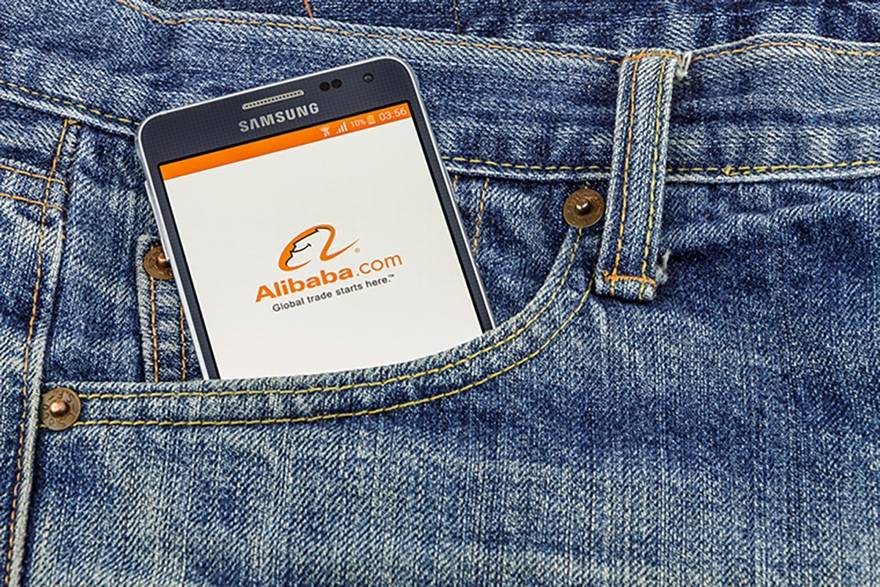Study: Invite consumers to pop-up, and pop goes the spending
- October 4, 2019
- By Chuck Finder
- 4 minute read

To lure customers, online retailer Alibaba often targeted existing customers when marketing resources were limited.
Then along came a research project with a novel question: What if you pursued prospective customers, and then tracked their offline and online spending habits compared to frequent customers?
That’s how two Olin Business School researchers, along with a former fellow Olin faculty member and Alibaba officials, flipped the pop-up business model, and possibly more. The co-authors found that inviting potential customers via text message could increase buying with both a pop-up shop retailer and similar product vendors online.
In fact, that online shopping hangover — which they labeled a “spillover effect” — spread over far more retailers than the original participants and lasted as long as six weeks to three months after the initial text/pop-up lure.
Their paper, “The Value of Pop-Up Stores on Retailing Platforms: Evidence from a Field Experiment with Alibaba,” was published online Sept. 5 and is forthcoming in the journal Management Science.

“Pop-up stores have become an increasingly popular channel for online retailers to reach offline customers,” said co-author Dennis Zhang, assistant professor of operations and manufacturing management at Olin. “Pop-up stores are cheap and fast to build, which means that those internet-based retailers can test building them in many different locations and find the best strategies.”
All this increased spending starts with a pop-up shop and a cellphone invite.
Pop-up week of jeans sales
Co-authors Zhang and Lingxiu Dong, professor of operations and manufacturing management, worked on the huge project wiith former Olin colleague Hengchen Dai of UCLA and Alibaba’s Qian Wu, Lifan Guo and Xiaofei Liu. The group conducted the experiment tracking some 799,904 Alibaba-app customers during a pop-up week of jeans sales in October 2017 in Hangzhou, China, southwest of Shanghai. Next, they followed those customers’ habits online for six- and 12-week periods to follow.

They randomly split the customers into two sets living within 6.2 miles of the pop-up: those who received a text-message invite — making no mention of brands, coupons or participant retailers — and control-group members who didn’t get an invite.
Using a type of “Internet of Things” (IoT) technology and the customers’ Alibaba apps, they were able to track customers even when the customers bought nothing in the pop-up, which mostly was an online portal that allowed them to use a virtual fitting-room function to “try on” jeans on a screen. (Customers also found coupons once they arrived at the physical store.)
Building trust with platform itself
Some of the findings:
- Foot traffic increased by 76.19% because of the text invites; using the tracking information to determine frequent/existing from infrequent/prospective customers, the researchers found that the text invites increased foot traffic among the former by 200% and the sought-after second group by 69%.
- Invitees spent 39.51% more money on participating retailers online long after the original pop-up visit. They also spent 17.17% more on non-participating retailers, defined as those beyond the pop-up vendors and carrying at least 10 jeans products on their online stores.
- The buzz continued for those non-participating retailers deep into the New Year, some 12 weeks after the October pop-up week. Their sales saw a 14.89% increase while participating retailers experienced no lingering effect, at least not one that was statistically significant either way.
“This suggests that customers are not only building trust with specific retailers on the platform but also with the platform itself.” Zhang said.
The researchers found that the text invites increased foot traffic among existing customers by 200% and the sought-after prospective customers group by 69%.
The experiment offers insights into the relationship and dynamics of online and offline shopping behaviors, which can be very helpful for retailers to devise omni-channel strategies.
Lingxiu Dong
The co-authors surmised that the pop-up visits served as a “transient billboard”: The shop advertised the presence, and thereby increased awareness, of these retailers — existing, frequent customers were already under the tent, but the prospective customers could be won over a fiscal quarter at a time. The visits also provided “experiential learning” so customers could assess these retailers’ products.
They also realize this experiment centered on jeans, a product requiring a good fit, feel. Commodity products — entertainment devices, food, etc. — could be evaluated more easily “without touching or trying on.”
Then again, it revolved around the online retailer Alibaba rather than a line of physical stores/chains. The study suggests positives for both types via pop-ups and invites, though the next step in research is to study pop-up store effects for traditional, omni-channel retailers. Using data correctly, the co-authors said, many retailers could be able to create personalized shopping experiences for both offline and online sales.
“As we have shown, pop-up stores are very efficient in reaching offline customers and attracting them online. This will be a good strategy for retailers who face online growth pressure in certain areas.” Zhang said.
Media inquiries
For assistance with media inquiries and to find faculty experts, please contact Washington University Marketing & Communications.
Monday–Friday, 8:30 to 5 p.m.
Sara Savat
Senior News Director, Business and Social Sciences
